Receiving treatment from our orthodontist Liverpool is an excellent investment in your future health and appearance, but it comes along with some responsibilities to get the most out of your care. Let’s look at a few of the options available in our clinic.

The art and science of orthodontics has always been how to coax teeth into new positions, as quickly and comfortably as possible, causing few side effects. As teeth can be moved by consistently applying pressure, orthodontic tools sit in the patient’s mouth and do the heavy lifting, pushing and reorienting teeth with a few tweaks if needed. Here we look at some of the devices used at our practice Liverpool Smile Studio.
Types of orthodontic tools
- Traditional fixed brace
The traditional brace may be one of the oldest tools that our orthodontist Liverpool still uses, but it certainly does the job in a wide variety of situations.
- Clear aligners
Clear aligners are growing quickly in popularity as they are so discreet. Used in clinics nationwide, they’ve made a big splash with their translucent aesthetic and lightweight forms, making them the most convenient way to carry out orthodontic treatment, particularly useful for mild or cosmetic misalignment.
- Removable appliances
Removable appliances are the jack-of-all-trades, assembled when there is a complicated case that doesn’t require so much force as it does a strange assembly of tools. This can be a mixture of an archwire with brace components, but also clear aligner components, appearing more similar to a retainer than a full brace. They can be removed and are a widely used appliance.
- Arch extenders; functional appliances
You are unlikely to notice them in everyday life; functional appliances are large triangular boxes which interlock with each other and all worn inside the teeth, pushing outwards helping to extend or make a tooth arch wider. They can’t be seen from the outside, but they do obstruct speech which can make them tedious to wear throughout the day, with most patients having to take them out in order to communicate.
- Retainers
Retainers do not move teeth; they only maintain them in the positions that the retainer itself has been set to. They are used to stop a common orthodontic complication known as reversion. There are tendons that connect the sides of our roots to the jawbone; when teeth are moved by orthodontic treatment these tendons are placed under tension. Over time, they will extend and adjust, changing positions, but immediately after an orthodontic tool is removed, they can start pulling the teeth back to their original positions.
General maintenance and upkeep
All orthodontic tools will create spaces for bacteria to build up in and food particles to become trapped. Although it is significantly easier to avoid this with the removable appliances that you can take out before eating, it does not change the fact that they will require regular cleaning and more attention will have to be paid to brushing, in order to mitigate the increased risk of cavity formation.
Advice more specific to you
As you can see, there is a wide variety of orthodontic options and they can be used in combination or sequentially. So for advice that’s more relevant to you, you really should come to our orthodontist Liverpool and discuss your treatment options.


